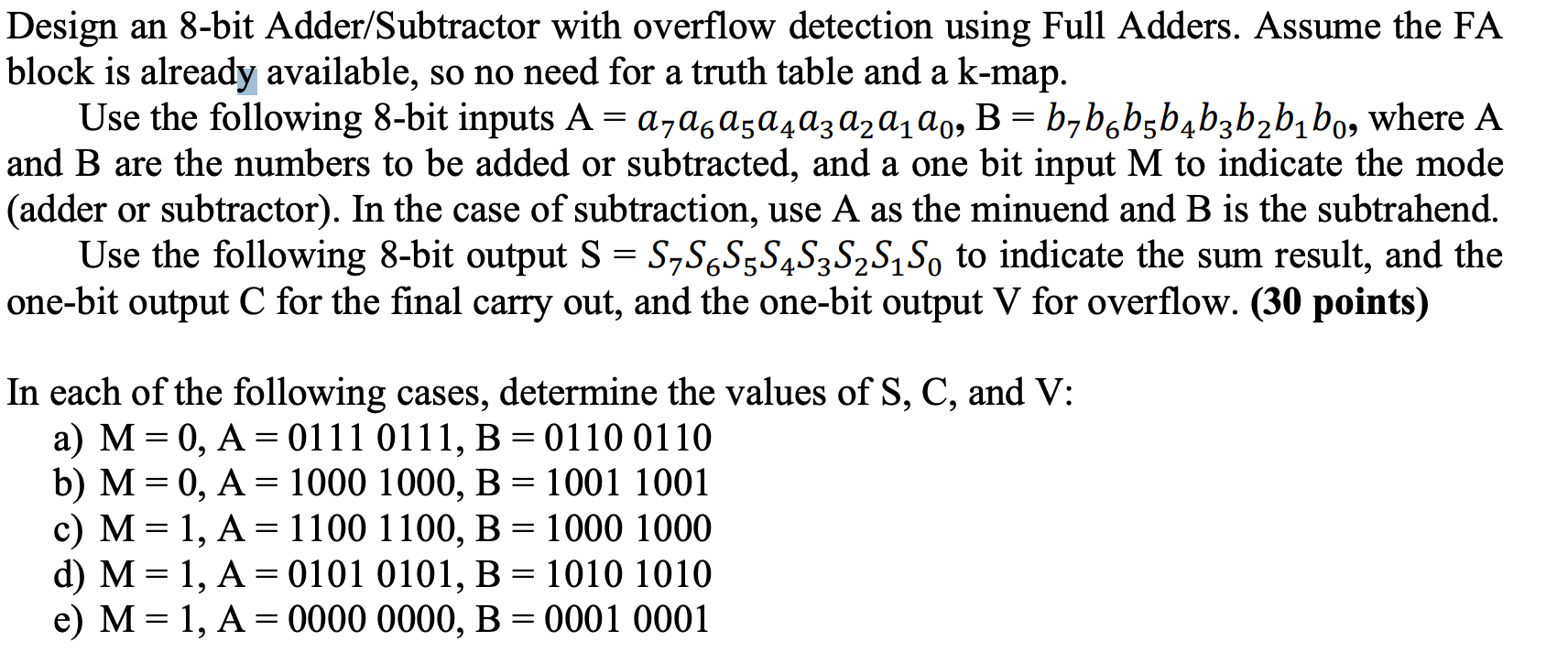Home /
Expert Answers /
Computer Science /
design-an-8-bit-adder-subtractor-with-overflow-detection-using-full-adders-assume-the-fa-block-is-pa656
(Solved): Design an 8-bit Adder/Subtractor with overflow detection using Full Adders. Assume the FA block is ...
Design an 8-bit Adder/Subtractor with overflow detection using Full Adders. Assume the FA block is already available, so no need for a truth table and a k-map. Use the following 8-bit inputs \( \mathrm{A}=a_{7} a_{6} a_{5} a_{4} a_{3} a_{2} a_{1} a_{0}, \mathrm{~B}=b_{7} b_{6} b_{5} b_{4} b_{3} b_{2} b_{1} b_{0} \), where \( \mathrm{A} \) and \( B \) are the numbers to be added or subtracted, and a one bit input \( M \) to indicate the mode (adder or subtractor). In the case of subtraction, use \( \mathrm{A} \) as the minuend and \( \mathrm{B} \) is the subtrahend. Use the following 8-bit output \( \mathrm{S}=S_{7} S_{6} S_{5} S_{4} S_{3} S_{2} S_{1} S_{0} \) to indicate the sum result, and the one-bit output \( \mathrm{C} \) for the final carry out, and the one-bit output \( \mathrm{V} \) for overflow. (30 points) In each of the following cases, determine the values of \( \mathrm{S}, \mathrm{C} \), and \( \mathrm{V} \) : a) \( \mathrm{M}=0, \mathrm{~A}=01110111, \mathrm{~B}=01100110 \) b) \( \mathrm{M}=0, \mathrm{~A}=10001000, \mathrm{~B}=10011001 \) c) \( \mathrm{M}=1, \mathrm{~A}=11001100, \mathrm{~B}=10001000 \) d) \( \mathrm{M}=1, \mathrm{~A}=01010101, \mathrm{~B}=10101010 \) e) \( \mathrm{M}=1, \mathrm{~A}=00000000, \mathrm{~B}=00010001 \)
Expert Answer
Here is the design ABSAVMAdder/Subtractor a) M=0 A=0111 0111, B= 0110 0110 S = 01000100
